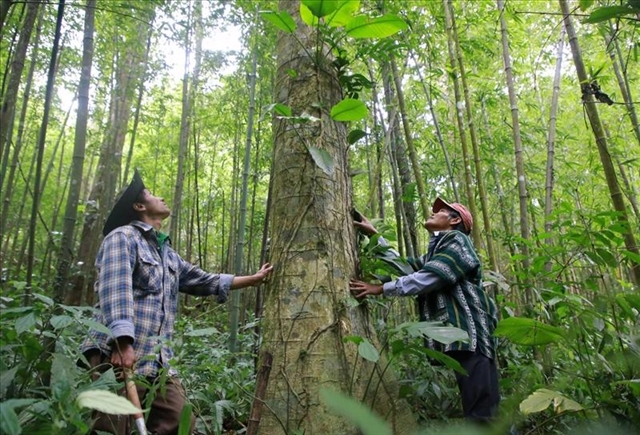
HÀ NỘI — Tight timber supply, coupled with transport delays, has been holding back furniture manufacturers, exposing the need for domestic substitution for imported timber.
Lê Quốc Doanh, deputy minister of agriculture and rural development, estimated timber demand between 2017 and 2021 rose from 34.2 to 41 million cubic metres.
Domestic timber accounts for 77.4 per cent of timber supply and imported timber takes up the rest.
As the latter has become more volatile in recent years, he believes Việt Nam should step up afforestation to become less dependent on foreign logs, ensuring the stability of the furniture industry.
“Domestic timber falls short of demand. Additionally, small and young trees are overrepresented in domestic forests. These trees are not good enough for making high-quality furniture,” he added.
The minister said his ministry had been financially supporting forest owners to boost the coverage of certified forests, notably those certified by the Forest Stewardship Council and the Programme for the Endorsement of Forest Certification, to meet the technical requirements of large furniture importers.
The ministry also urged the Vietnam Timber and Forest Product Association (VTFPA) to develop a data system of timber supply and demand to better monitor the market, reducing price uncertainty.
Chairman of the VTFPA Đỗ Xuân Lập underlined domestic timber as the key to the sustainable furniture industry.
He said that the recent Russian military operations in Ukraine, coupled with a prolonged pandemic, had been pushing up logistic costs and timber prices, putting a strain on furniture manufacturers.
Data from the General Department of Customs shows that imported timber prices increased by up to 52 per cent in the first three months of this year.
The chairman thus called for larger forest coverage and higher timber productivity to promote a self-sufficient timber industry, reducing the dependence on imported timber.
“While average timber productivity is about 150-200 cubic metres per hectare worldwide, the figure is just 80-90 cubic metres per hectare in Việt Nam. He said that such a disparity represented a great disadvantage of the country,” he said.
The chairman also suggested an official market for forestland transfers and called for favourable policies to encourage more firms to invest in forest plantations to push up timber output.
Đỗ Thị Bạch Tuyết, chairwoman of the Woodsland Tuyên Quang JSC., opined that the plan to develop huge woodlands with new trees periodically planted every seven years or less is not feasible since forest growers did not have sufficient money to stick with the plan.
"On top of that, seed quality has been deteriorating in recent years, leading to high tree mortality and low timber productivity," she added.
Accordingly, the chairwoman urged the Government to offer preferential loans to firms and households to encourage them to engage more actively in a forest plantation.
She also urged the Government to keep a close watch on tree seeds to raise the bar on timber quality and push timber productivity to the next level.
Nguyễn Văn Diện, director of the ministry's Forestry Production Development Department, noted that Việt Nam had 14.68 million hectares of forests by March 2022, of which 2.17 million hectares are special-use forests, 4.68 million hectares are protection forests, and 7.82 million hectares are production forests.
Notably, production forests are comprised of 3.69 million hectares of planted forests and 4.13 million hectares of natural forests.
“However, only 30-40 per cent of timber from planted forests really lend themselves to furniture manufacturing. The rest end up ground and compressed for other purposes," he said.
The director admitted that such a proportion indicates ample room for quality improvement. — VNS
Xem thêm: lmth.yrtsudni-elbaniatsus-a-ot-yek-rebmit-citsemod/0508711/ymonoce/nv.swenmanteiv